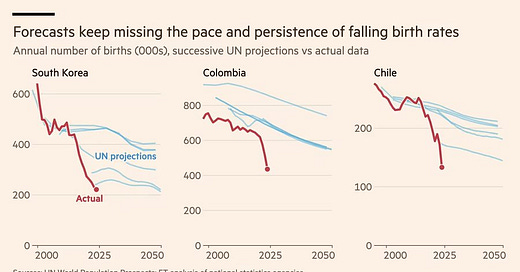Are Climate Models Built on Shaky Foundations?
Questioning the Assumptions that Shape Climate Policy
Climate models are often hailed as the bedrock of climate science, the unshakeable foundation upon which policy, regulation, and global action are built. Yet, these models rest on three critical assumptions: accurate population projections, a precise understanding of carbon sources and sinks, and the physics governing CO2’s behavior in the atmosphere. Beneath their polished exterior lies a troubling reality: these assumptions are riddled with guesswork, speculation, and glaring uncertainties. Are these models genuine tools for insight, or dangerously flawed frameworks that mislead us on climate policy? What follows is a look at just how deep these flaws go, and a challenge to the so-called “settled science” of climate models. Are we really basing global decisions on science, or on little more than speculation?
Population Projections: The First Shaky Pillar
The first assumption underpinning climate models is population growth. The logic seems sound: more people mean more emissions. But in reality, population projections are as much an exercise in guesswork as in science. According to analyses by experts like Roger Pielke Jr., these projections routinely overshoot, often by a significant margin. Take South Korea, for instance, models project rising birth rates when, in reality, the country’s birth rate is plummeting.
This is not just a minor error; it’s a domino effect that skews emissions projections worldwide. If climate models rely on inflated population figures, they inherently predict emissions that will never happen. And yet, this glaring flaw in demographic forecasting remains oddly tolerated within climate science.
By overestimating future population growth, climate models effectively overestimate future emissions, creating scenarios that are based on phantom carbon footprints. Ignoring these inaccuracies throws the entire modeling framework off course. This is not a minor oversight; it’s a fundamental flaw that raises serious questions about the credibility of climate predictions.
Carbon Sources and Sinks: An Uncertain Balance
The second shaky pillar propping up climate models is our understanding of carbon sources and sinks. We’re told that human activities contribute roughly 3% of total carbon emissions, yet this small fraction supposedly has a disproportionate impact on atmospheric CO2. Recent research paints a very different picture. A groundbreaking study published in Nature found…
Keep reading with a 7-day free trial
Subscribe to Irrational Fear to keep reading this post and get 7 days of free access to the full post archives.




